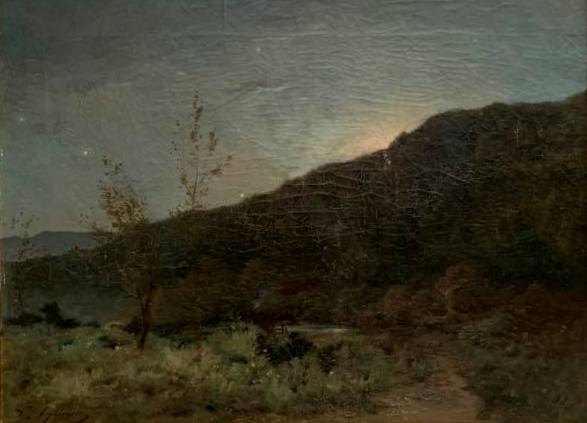Description:
Bernard-Léon Eymieu (1828-1907) was a French painter. He studied under Sauvageata and Roullet. He exhibited his works at the Salon of the Société des Artistes Français, of which he was also a member. His works mainly consist of atmospheric landscapes depicting the coasts of Brittany, as well as the vicinity of his hometown of Saillans.
Description of the painting:
The painting, called “Nocturne” which derives from the Latin word “nocturnus” meaning night, is otherwise known as a nightscape. Until the 19th century, nightscapes were a rare subject for artists. This changed with the emergence of the Impressionists who were interested in transient light phenomena, including the different times of day. Nocturnes required landscape painters to make night observations, work in the dark, and be able to recognize the subtle color nuances that come with moonlight. At night, colors lose their sparkle, objects become blurred, and often vanish into the darkness. The moonlight brings out a whole new quality to the surroundings.
This phenomenon can be seen in Bernard-León Eymieu’s “Nocturne”. The sloping terrain is engulfed in a gray-graphite, matte shadow, in which details are lost. It is difficult to determine the distance of the mountain from the foreground due to the darkness engulfing the whole elevation. This darkness may evoke fear and uncertainty, as well as a sense of being lost in the night and indistinct landscape. However, from behind the slope, a moonlight diffuses, illuminating the night sky and also the path and vegetation in the foreground. The moonlight enlivens the landscape and makes it more friendly and accessible.


